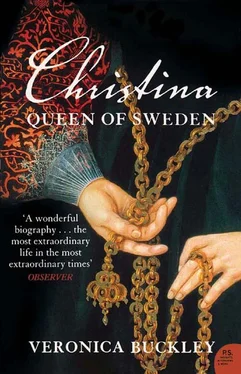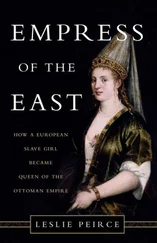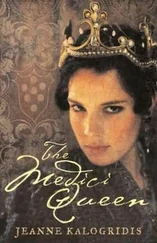Back in Meuchen, one Swedish soldier, recovering from his own wounds, arranged a primitive memorial to his lost commander-in-chief. With the help of local peasants, he rolled a large stone – the ‘Swede’s Stone’ – to the place where his King had fallen. 15
It is said that the Emperor himself wept, and ordinary people who had never set eyes on the great King wailed in the streets at the news of his death. ‘He alone was worth more,’ said Richelieu, ‘than both the armies together.’
The King’s body had now to be transported back to Sweden, escorted, in death as in life, between footsoldiers and cavalrymen. From Weissenfels it was carried a hundred miles north towards Berlin, and in the middle of December, the cortège was met by the newly widowed Queen. She was almost hysterical. For several weeks, fearing to aggravate her state, her attendants had kept her in Erfurt, preventing her from travelling to where her husband’s body lay. Now, seeing his lifeless form, she gave way to an extravagant grief. The King’s heart had been taken from his body, to be separately preserved; this Maria Eleonora now took to herself, wrapping it first in a linen kerchief and later placing it in a golden casket. She kept it with her constantly. At night, it hung above her bed, glowing in the light of vigil candles, while the Queen wept desperate tears.
Northward the Swedes continued their sorrowful journey. At Wolgast, they paused; the Baltic Sea was frozen, and for many months there would be no passage across to Sweden. Maria Eleonora’s behaviour became increasingly bizarre; the eccentric traits which she had shown for some years had been intensified, it seemed, by the shock of the King’s death. Now, disregarding the entreaties of those around her, she began to make plans for an elaborate funeral, spending wildly on one scheme after the next. Her stranded little court began to disintegrate into chaos, while, day and night, Maria Eleonora clung, often literally, to her husband’s mortal remains, until her attendants feared she had lost her reason. In February 1633, three months after the King’s death, she wrote from Wolgast: ‘Since We, God pity Us, were so rarely granted the pleasure of enjoying the living presence of His Majesty, Our adored, dearest master and spouse, of blessed memory, it should at least be granted to Us to stay near his royal corpse and so draw comfort in Our miserable existence.’ 16
From Stockholm, the alarmed senators dispatched the Chancellor’s cousin, Gabriel Oxenstierna, to investigate the Queen’s entourage and to oversee the return of the King’s body home to Sweden. Delayed by illness and the winter weather, Oxenstierna reached Wolgast only in the middle of May, and there he found the grieving Queen ‘swimming in tears’, and her little court in wretched disorder.
It was not until July that the royal flagship set off at last, and in early August the entourage arrived at the industrial town of Nyköping, on the eastern coast of Sweden. Here, furnaces blasted and foundries thundered, shipwrights and millworkers toiled and travailed. Once the country’s capital, Nyköping now centred on a magnificent Renaissance castle, the Queen’s private residence. It was here, twenty years before, that Gustav Adolf had been proclaimed King, and it was here that his body now came to a temporary rest. 17
It was in Nyköping, too, that Maria Eleonora at last saw again her six-year-old daughter. It had been some fifteen months since their last meeting; since the spring of the previous year, the Queen had been in Germany, visiting her family, following her husband’s campaigns. Christina had been left in Sweden in the care of her paternal aunt, the Princess Katarina, and she had now travelled to Nyköping ‘in person, with all the senators and all the noblemen and women’, to meet the sad cortège. Dutifully, the little girl approached the unfamiliar, grieving woman who was her mother. ‘I kissed her,’ she was later to write, ‘and she drowned me with tears, and nearly suffocated me in her arms.’ 18
The King’s body was laid at first in the castle’s Green Hall, but Maria Eleonora, now refusing any talk of burial, soon had it removed to her own bedroom. The coffin was covered by an elaborate set of oval pearls after her own design, but it remained unsealed, and it seems that it was not seldom opened. More than a year after the King’s death, the men of the Swedish parliament, shocked, embarrassed, and indignant, petitioned the Estate of the Clergy, asking ‘whether a Christian could in good conscience apply for and be granted the right to open the graves and the coffins of their dead and gaze at and fondle their bodies in the belief that through these acts they would receive some comfort and solace in their state of great heart-rending sorrow and distress’. 19But slow planning for the state funeral, and perhaps, too, some pity for their great King’s widow, stayed any firm response.
After many delays, and constant opposition by Maria Eleonora, the King’s body was at last interred on 15 June 1634, nineteen months after his death. Towards the Riddarholm Church in Stockholm, final resting-place of Sweden’s kings, the body was borne on a silver bier, encircled by military standards and captured enemy cannon and other symbols of the warrior King’s victories, including his bloodstained sword, just as it had been taken from the battlefield at Lützen. A vast crowd of people accompanied the procession, weeping, mourning, straining to see. And among the nobles and soldiers and court officials, some of them spied one very small figure – their new, seven-year-old Queen.
Within a day of the King’s interment, Maria Eleonora pleaded for the coffin to be opened again, asking that the King should not be buried while she lived.
Fourteen years before, when the handsome young ‘Adolf Karlsson’ had come to court her, the body of Maria Eleonora’s father had lain in state, months after his death, in the gloom of the castle chapel, while the drab accompaniments of a formal mourning oppressed his court. The King’s own mother, too, had lain unburied through the long northern winter, awaiting her son’s return from the conquests that would make his name feared and famous. But, even in an age of delayed burial and long months of mourning, Maria Eleonora’s grief at her husband’s death was felt to be excessive. Throughout the royal apartments, darkness reigned. Black fabrics draped the walls from ceiling to floor, and the windows were blocked with sable hangings; no daylight filtered through. Sermons and pious orations droned endlessly. The Queen mourned day and night, relieved only by her troupe of dwarves and hunchbacks, dancing in the candlelight. Bereft of her husband, she now turned her attention for the first time to her little daughter, smothering her with new-found affection, and forcing her to live alongside her in the macabre atmosphere. She dismissed Christina’s Aunt Katarina, who had looked after the child for the previous two years, and announced that from now on she herself would take care of her. The once rejected girl-child, ugly and ‘swarthy as a little Moor’, was now found to be ‘the living image of the late King’, and the Queen scarcely let her out of her sight. By day the little girl struggled to escape to her books and her horses; by night she was obliged to share her mother’s bed in the gloomy chamber, lying fearful and lonely beneath her father’s encased heart. The King’s death had set in train a melodrama of mourning in which Christina was to remain a virtual prisoner, until her rescue by the ‘five great old men’ who were now to serve as Sweden’s regents.
Конец ознакомительного фрагмента.
Текст предоставлен ООО «ЛитРес».
Читать дальше












